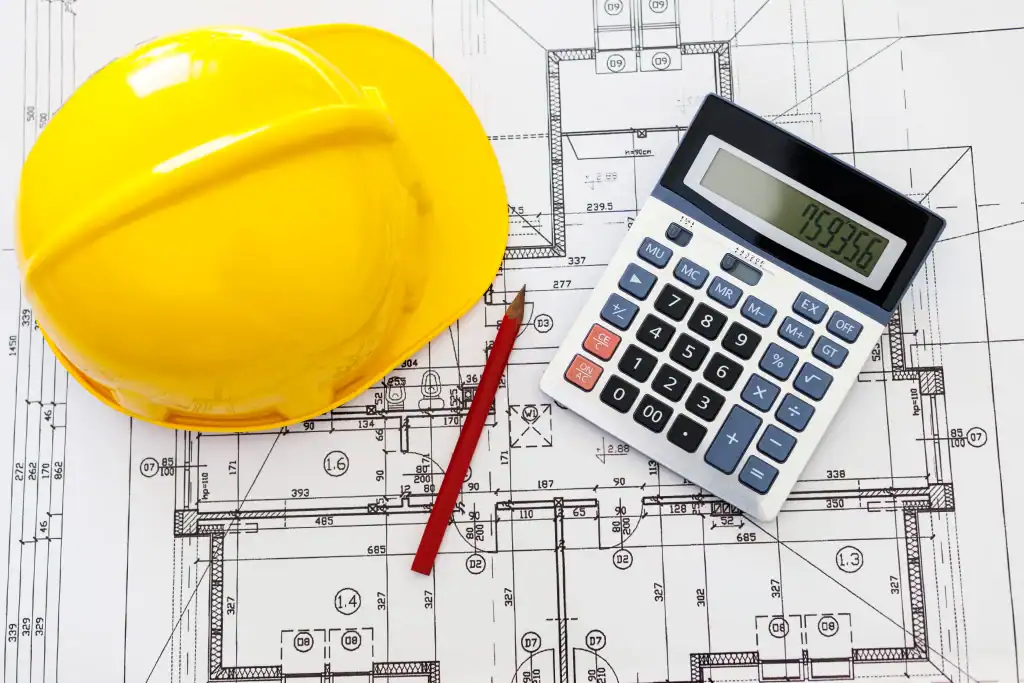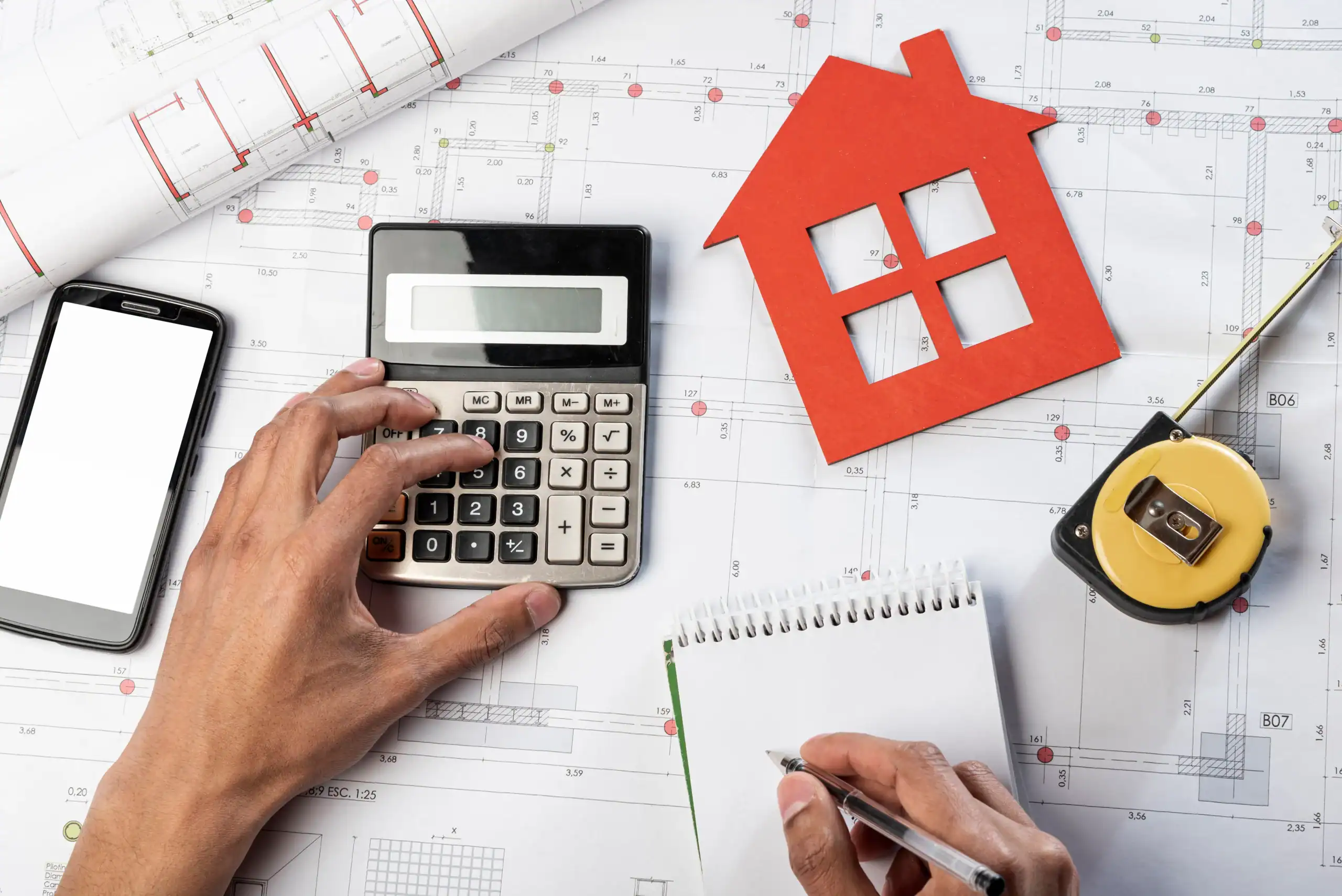Cost Estimation in Construction: Tools and Techniques

Introduction
In construction and infrastructure world, each and every decision comes with a cost — from the raw blueprint structure to the final finishing touches. Whether it’s a road, bridge, industrial complex, or residential township, the success of every project often depends on one major factor: accurate and precise cost estimation.
Cost estimation in construction is much more than just calculating expenses. It’s a strategic procedure that determines the projects stay within the budget, meet tight deadlines, and deliver profitability without compromising quality. With modern technologies and digital tools transforming how EPC organizations plan and execute projects, cost estimation has evolved into a science backed by data, automation, and precision.
Carbyne Infrastructure, one of India’s fastest-growing EPC (Engineering, Procurement, and Construction) organization, has comprises these advanced cost estimation practices to deliver complex infrastructure projects on time and within budget.
In this blog, we are going to explore what cost estimation in EPC means, its different types, tools, and techniques, and how Carbyne Infrastructure initiates modern estimation strategies to achieve excellence in every project.
What Is Cost Estimation in EPC Industry?
Cost estimation is the general procedure of forecasting the financial resources which are required to complete an EPC project. It includes labor, materials, equipment, overheads, contingencies, and profit margins.
An accurate cost estimate helps stakeholders make informed decisions, avoid unexpected expenses, and optimize resource allocation. For EPC companies like Carbyne Infrastructure, cost estimation forms the foundation of project planning and execution — ensuring transparency and control throughout the lifecycle.
Importance of Cost Estimation in Construction
Financial Planning:
A precise estimate validates that adequate fund is available for each phase of the project for smooth execution.
Project Feasibility:
Estimations help evaluate whether a project is economically viable before breaking ground.
Resource Allocation:
Ensures optimal distribution of resources such as labor, machinery, and materials.
Risk Reduction:
Helps identify potential financial risks early, allowing teams to plan mitigation strategies during the estimation.
Client Confidence:
Transparency in cost forecasting builds trust with both clients and investors.
Efficient Bidding:
Validates contractors to submit competitive yet profitable project proposals.
At Carbyne Infrastructure, cost estimation is deeply associated into every stage from execution to kickoff — from pre-tender analysis to execution — to ensure reliability, accountability, and excellence.
Types of Cost Estimates in Construction
Depending on the stage of the project, different types of cost estimates are prepared:
- Preliminary or Rough Cost Estimate
Prepared in the early project stages using limited data to get an approximate cost idea. It helps assess project feasibility.
- Detailed Cost Estimate
A comprehensive calculation that includes materials, labor, machinery, overheads, and contingencies. Used for final budgeting and tendering.
- Quantity-Based Estimate
Focuses on the detailed measurement of quantities — like cement, steel, or concrete — to calculate total project costs.
- Unit Rate Estimate
Applies standard unit rates (e.g., cost per square meter) to quantities for quick estimation.
- Revised Cost Estimate
Prepared when there are design or scope changes during execution.
- Supplementary Cost Estimate
Covers additional work not included in the original contract.
- Definitive or Control Estimate
Serves as a cost control tool during project execution, helping track expenses against the original estimate.
Key Components of a Construction Cost Estimate
To ensure precision, estimators consider multiple cost factors:
Direct Costs: Materials, labor, equipment, subcontractor charges
Indirect Costs: Supervision, quality assurance, safety, site office expenses
Contingencies: Unforeseen risks or price escalations
Overheads: Administrative, insurance, and compliance costs
Profit Margins: Contractor’s anticipated earnings
At Carbyne Infrastructure, each component is analyzed with real-time data and verified supplier rates to ensure cost reliability and transparency.
Stages of Cost Estimation
- Conceptual Stage
Initial budgeting based on project scope and scale. Helps in determining financial feasibility.
- Design Stage
Estimates refined using design drawings and BOQs (Bills of Quantities).
- Tendering Stage
Detailed estimates form the basis of bids submitted to clients.
- Execution Stage
Continuous monitoring of costs against estimates ensures timely corrective measures.
- Post-Completion Stage
Actual costs compared with estimates to analyze deviations and improve future projections.
Techniques of Cost Estimation in Construction
Cost estimation isn’t just about spreadsheets — it’s about applying analytical and technological methods that enhance accuracy. Here are the most common techniques used by professionals and EPC firms like Carbyne Infrastructure:
- Analogous Estimating
Based on the cost of similar past projects. Ideal for quick early-stage estimates.
Example:
If a previous 5 km road project cost ₹50 crore, a similar one might cost proportionately based on new parameters.
- Parametric Estimating
Uses statistical relationships between project variables (like area, material type, labor hours) and costs.
Example:
Cost per square foot of construction multiplied by total project area.
- Bottom-Up Estimating
Involves calculating the cost of each activity or work package and summing them up for total cost. This method provides the highest accuracy.
- Top-Down Estimating
A macro-level estimation where total project cost is distributed among different components based on percentage allocation.
- Three-Point Estimating
Considers three scenarios — optimistic, pessimistic, and most likely — to derive a balanced average cost.
- Resource-Based Estimating
Focuses on resource utilization and productivity rates for more data-driven results.
Tools and Software for Cost Estimation
Digitalization has revolutionized the way EPC firms manage cost estimation. Manual spreadsheets are being replaced by intelligent tools that integrate with design and project management software.
Here are some of the best tools and software for construction cost estimation in 2025:
Autodesk Construction Cloud
Integrates BIM and project data for cost control and risk management.
Best for: Large EPC projects with detailed design data.
PlanSwift
A user-friendly takeoff and estimation tool ideal for quick quantity measurements.
ProEst
Cloud-based estimating and bidding software designed for collaborative teams.
Buildertrend
Streamlines budgeting, scheduling, and communication for small to mid-sized contractors.
Bluebeam Revu
Allows digital takeoffs, markup, and cost tracking directly from design drawings.
Candy by RIB CCS
Widely used in the EPC sector for estimating, tendering, and project control.
CostX
Offers 2D and 3D takeoff integration, improving accuracy in digital estimation.
BIM 360 Cost Management
Enables real-time cost tracking and change order management integrated with BIM workflows.
How Carbyne Infrastructure Utilizes Modern Cost Estimation
Carbyne Infrastructure integrates digital estimation tools and advanced analytics to maintain accuracy, transparency, and efficiency across all projects.
Key Practices Followed by Carbyne Infrastructure:
Data-Driven Estimation
Utilizes past project data and market analytics for real-time cost benchmarking.
BIM-Integrated Estimation
Combines Building Information Modeling with cost estimation for precise quantity extraction and error reduction.
Automated Takeoffs and Tendering
Reduces manual errors and speeds up proposal preparation.
Continuous Cost Monitoring
Real-time tracking ensures alignment with budgets and quick corrective measures.
Vendor Rate Database
Maintains updated supplier and contractor rates for better procurement accuracy.
Collaborative Workflow
Integrates estimation, procurement, and execution teams under a unified digital platform.
Through these practices, Carbyne Infrastructure ensures that every project — from roads and bridges to industrial facilities — remains financially viable and efficiently executed.
Challenges in Construction Cost Estimation
Despite technological advancements, some challenges persist:
Price Fluctuations – Volatility in material and fuel costs can affect estimates.
Inaccurate Data – Outdated or incomplete data can lead to miscalculations.
Design Changes – Frequent revisions increase costs and complicate forecasts.
Unforeseen Risks – Weather, labor strikes, or regulatory changes can alter projections.
Lack of Integration – Manual systems may fail to sync between departments.
Carbyne Infrastructure mitigates these risks through predictive modeling and risk-adjusted estimation frameworks.
Best Practices for Accurate Cost Estimation
Use Reliable Data Sources
Rely on verified cost databases and updated supplier rates.
Include Contingencies
Allocate 5–10% for unforeseen factors.
Leverage Technology
Integrate AI, BIM, and automation tools for precision.
Collaborate Across Teams
Ensure estimators, engineers, and procurement teams share real-time updates.
Validate Regularly
Compare estimates with actual project costs for continuous improvement.
Future of Cost Estimation in Construction
The future lies in AI-driven predictive estimation, machine learning analytics, and cloud-based collaboration platforms to make process more swift and easy.
Emerging technologies like digital twins, IoT-based tracking, and data automation will redefine how EPC organisations proceed towards cost management.
Carbyne Infrastructure is already heading towards this digital future — adopting intelligent tools and integrated platforms to build smarter, faster, and more sustainably.
Conclusion
Accurate cost estimation is an epicentre of every successful construction project. It not only defines profitability but also influences timelines, quality, and client satisfaction.
With much often usage of digital products and data intelligence, cost estimation is transforming from manual art form to data-driven precision. Carbyne Infrastructure, as a trusted EPC leader among the country, continues to embrace this achievement — mixing innovation, technology, and expertise to serve one of the best infrastructure that drives India’s progress.
Whether it’s a road development, industrial plant, or smart city development, Carbyne Infrastructure’s commitment to cost accuracy and operational excellence ensures every project stands strong — both financially and structurally.
Key Takeaways
- Cost estimation is crucial in construction, impacting budgeting, timelines, and project success.
- Carbyne Infrastructure uses modern cost estimation tools and techniques to ensure accuracy and efficiency.
- Types of cost estimates include preliminary, detailed, quantity-based, and unit rate estimates, each serving specific project stages.
- Best practices for accurate cost estimation involve using reliable data, including contingencies, leveraging technology, and collaborating across teams.
- The future of cost estimation focuses on AI-driven analytics and digital tools that enhance precision and integration in project management.
Estimated reading time: 8 minutes


Leave A Comment